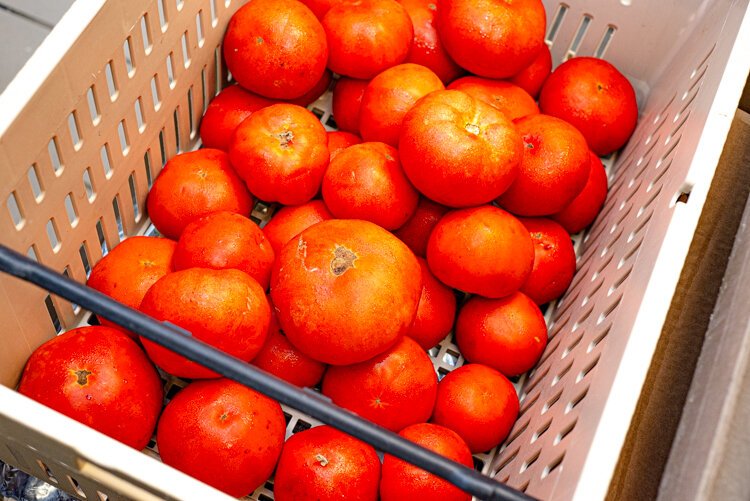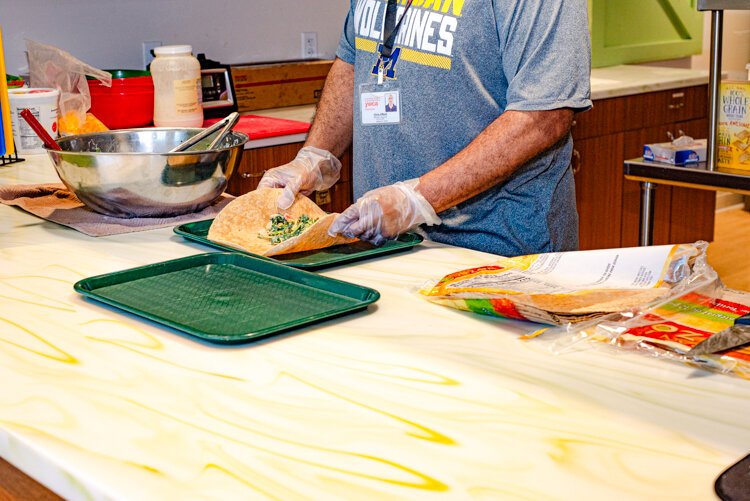How 10 Cents a Meal brings healthy food to more children in Michigan

It is a different kind of learning when a child tastes and appreciates garden-fresh food. Child care workers learn this through the program 10 cents per meal for Michigan’s children and farmswhere eligible institutions receive money from the State of Michigan when they give Michigan fruits, vegetables, and legumes to children.

 Taylor ScamehornChris Elliott of the Edison YWCA opens the kitchen doors so the children can watch the food being prepared.
Taylor ScamehornChris Elliott of the Edison YWCA opens the kitchen doors so the children can watch the food being prepared.
“Michigan is rich in agriculture, and many food program directors at schools and daycare centers want to buy and serve Michigan-grown fruits, vegetables and legumes,” says Megan Maddox of the From farm to program team with the Michigan Department of Education. “Many probably already buy local food from their wholesaler, grocer, farmers market or retail store. Why not get 50% of the cost of eligible food purchases reimbursed?
“10 cents per meal helps supplement food supply program budgets for fresh produce and promotes greater menu variety and healthy eating habits for children nationwide. Building farm-to-program partnerships with local farms and retailers also helps invest in the local food economy.”

 Taylor ScamehornChildren enjoy a fresh and nutritious meal with local products, inspired by culinary professionals.
Taylor ScamehornChildren enjoy a fresh and nutritious meal with local products, inspired by culinary professionals.
Lays the foundation
10 Cents a Meal was launched as a pilot program in 2016 and became a government-funded program in 2020. The program is a collaboration between the Department of Education, Michigan Department of Agriculture and Rural Development, Groundwork Center for Resilient CommunitiesAnd Center for Regional Food Systems at Michigan State University.
The program has expanded every year since 2016, and in 2020, school districts in every county and every early childhood care and education (ECE) location became eligible to participate in the program.

 Taylor ScamehornJomo Upton, executive chef at the Edison YWCA, serves potato soup with turkey and cheese wraps with local spinach and tomatoes on the side.
Taylor ScamehornJomo Upton, executive chef at the Edison YWCA, serves potato soup with turkey and cheese wraps with local spinach and tomatoes on the side.
“For the 2023-2024 program year, we have awarded all $9.3 million allocated for the 10 cent per meal grant to 269 school districts, ECEs and community feeding sites,” says Maddox. “We are so proud that more children and farms will be supported through the program this year than ever before.”
In the 2022-2023 program year, over three-quarters of grantees (77%) reported that the 10 Cents Per Meal grants enabled them to try new products in their nutrition program that they would not have tried otherwise. In the 2022-2023 program year, food program leaders reported that 10 cents per meal enabled them to offer students and children more locally grown fruit (82%), offer more locally grown vegetables (72%), consume more fruit (73%), and consume more vegetables (65%).
“The 10 Cents a Meal program has made great strides in creating a positive impact not only for the grantees and the children they support, but also for Michigan farmers and food businesses,” says Megan McManus, Farm to Institution Specialist at the MSU Center for Regional Food Systems. “Our food program managers work very hard and under all kinds of difficult circumstances to feed our state’s children year-round. Their participation in 10 Cents a Meal shows that they are committed to supporting local farms and food businesses, feeding their children healthy, nutritious food, and caring for their community.”

 Taylor ScamehornTomatoes from Crisp Country Acres are delivered to the downtown YWCA kitchen by the Valley Hub, which sources its ingredients from 32 different local farms.
Taylor ScamehornTomatoes from Crisp Country Acres are delivered to the downtown YWCA kitchen by the Valley Hub, which sources its ingredients from 32 different local farms.
Bringing healthy food to more children in Michigan
One of the positive aspects of this program is that all sponsors of a Child nutrition program are eligible to participate.
“The 10 Cents a Meal team works hard to provide tailored support to grantees of every experience level,” says Maddox. “We want all grantees to fully participate in the program, regardless of their current local food sourcing, and we help them set goals to expand their farm-to-program activities over time.”

 Taylor ScamehornChris Elliott carefully prepares the turkey and cheese wraps. Both locations offer the same menus with the same basic ingredients; each chef uses his own recipe.
Taylor ScamehornChris Elliott carefully prepares the turkey and cheese wraps. Both locations offer the same menus with the same basic ingredients; each chef uses his own recipe.
The 10 Cents a Meal team continues to grow, meaning it has more capacity to support scholarship recipients.
“We would like to increase the number of ECE and community feeding sites participating in the program over the next two years,” says Maddox.
McManus is also looking forward to the future of this program.

 Taylor ScamehornChildren enjoy a fresh and nutritious meal with local products, inspired by culinary professionals.
Taylor ScamehornChildren enjoy a fresh and nutritious meal with local products, inspired by culinary professionals.
“Each year, the 10 Cents a Meal program has reached more grantees and more children, and I look forward to seeing this program have even greater impact in Michigan,” she says. “Despite numerous historical and systemic obstacles, communities across the state are working together to change Michigan’s school meal system. There is still a lot of work to be done to better support their efforts, and I look forward to the progress that can be made.”
The 2024-2025 10 Cents Per Meal Grant application will be available to Child Nutrition Program sponsors in NexSys by August 2024. Check out the latest 10 Cents Per Meal legislative branch And Evaluation Reports and their Success stories.
This story is part of a series that explores access, equity, and sustainability through good food in Michigan’s thriving food economy. This work is made possible by Good food in Michigan and is supported by the WK Kellogg Foundation.

